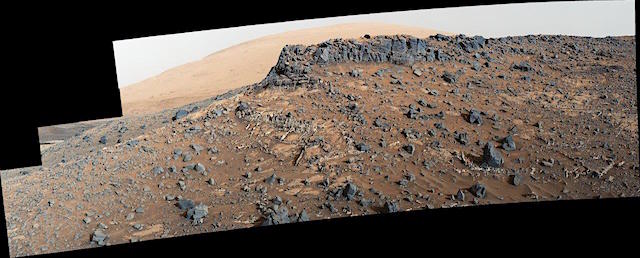 New data gathered by the Mars Curiosity rover indicates a potential history of hydrothermal activity at Gale Crater on the red planet, broadening the variety of habitable conditions once present there, scientists report in a new study.
New data gathered by the Mars Curiosity rover indicates a potential history of hydrothermal activity at Gale Crater on the red planet, broadening the variety of habitable conditions once present there, scientists report in a new study.
Researchers found concentrations of the elements zinc and germanium to be 10 to 100 times greater in sedimentary rocks in Gale Crater compared to the typical Martian crust.
Zinc and germanium tend to be enriched together in high temperature fluids and often occur together on Earth in hydrothermal deposits containing sulfur. The elevated concentrations of zinc and germanium in Gale Crater can potentially be explained by hydrothermal activity that occurred in the region, according to Jeff Berger, a geologist at the University of Guelph, in Ontario, Canada and lead author of the new study published in Journal of Geophysical Research: Planets, a journal of the American Geophysical Union.
Extreme thermal environments on Earth are home to a diverse array of microbial life adapted to these conditions, and these organisms may have been some of the first to evolve on Earth.
Evidence of possible hydrothermal activity has been found by other Mars rovers in other locations on the red planet and in Martian meteorite samples. Researchers have used computer simulations, laboratory experiments and investigation of hydrothermal sites on Earth to try to understand potential past hydrothermal activity on Mars.
Now with potential evidence for hydrothermal conditions once present inside or near Gale Crater, Curiosity’s mission takes another step toward determining if there were favorable environmental conditions for microbial life on Mars, according to the study’s authors. Hydrothermal deposits are more likely to preserve evidence of microbial life or its precursors, according to Berger.
“You have heat and chemical gradients… conditions favorable for the genesis and persistence life,” Berger said.
The new measurements come from the Alpha Particle X-Ray Spectrometer (APXS) on the Curiosity rover, which is exploring Mount Sharp in Gale Crater, the rover’s landing site. [More at links]








